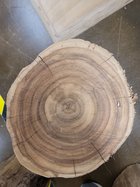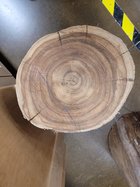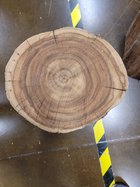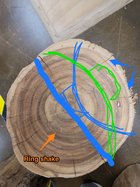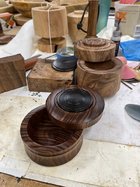That looks like Black Acacia to me - I love to turn it. Trim the ends back about 6” or so, get rid of the pith (I cut the quarter sawn pieces from the pith and save for small spindle work). There may still be some small cracks to negotiate as you cut up what’s left - think shallow bowls, small platters and, if nothing else, cut for boxes. Often the very small cracks will virtually disappear as it’s worked. The larger, open cracks need to be avoided.
Acacia is lovely to turn - is hard, almost brittle, but machines well. It can be hard on tools - lots of silica in some - so go to the grinder often. It finishes well with an oil finish and a little wax it has a beautiful, soft sheen. Here’s some salt vaults or pigs I’ve been working on this weekend. These were from some pieces I brought back from CA last summer - it had been down and cut up for nearly a year before I got my hands on it. Use good judgement, face mask and stay out of the line of fire. Don’t turn any wood that scares you, but not all cracks in acacia are structural. When in doubt, pewas are your friend.
View attachment 62853
